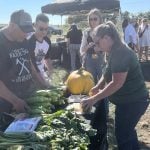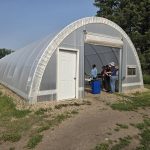Most people wouldn’t think trappers and farmers have a lot in common, but both are in the same business.
“Farmers are livestock managers, and we are wildlife managers,” said Westlock trapper Jim Mitchell, educational co-ordinator with the Alberta Trappers’ Association. “When farmers think about it, they understand it.”
At their heart, both are focused on management and treating animals in a humane way. Properly done, trapping maintains healthy populations and lessens the potential for the spread of disease by keeping animal numbers in balance with available habitat, Mitchell said.
Read Also

AgTalk, an online “coffee row” for farmers, has been renewed for two more years
AgTalk, an online support system for farmers, has been renewed through 2027.
“If you have too many animals in a habitat that cannot support them, there will be a lot of territorial infighting,” he said.
“Generally, disease and starvation will do them in. We recommend managing animals, taking surplus when the fur has value, and not endangering the young. That, in a nutshell, is what regulated trapping is about.”
As with farming, there’s an art to trapping. That ranges from the obvious, trapping during the winter months when the fur is at its thickest and most valuable, to searching for signs of disturbance around a trap (little or no disturbance indicates a swift kill) or swelling on an animal’s head, another sign of poorly done trapping.
“These are things that trappers have to look at, so they will get better at their craft,” Mitchell said.
It’s a craft worth learning about if you have problems on your farm. For example, any property owner can trap beaver on his or her own land (any other sort of trapping requires a licence) but you have to aim for controlling overall numbers and not eliminating every single beaver.
“As long as you have an open system, like a creek, you can remove every beaver on your property but if you have water and food, beaver will migrate in,” Mitchell said.
Mitchell recommends, at the very least, that farmers consult a knowledgeable trapper, and think twice about handling traps, which can easily cause injury to the inexperienced. And don’t expect a trapper will help you out just in exchange for the pelts.
“If your toilet is plugged, you don’t phone a plumber and expect them to fix your toilet for nothing.”
Dealing with predators, such as coyotes, demands what Mitchell calls “good predator management.” Often this means a combination of efforts, which might also include guard animals, proper disposal of deadstock, and restricting birthing to a fenced area. Poison, he said, is a last resort as trapping and shooting are more selective and cause immediate death. Mitchell says wolves are best left to a professional trapper, and that can either be a registered trapper (who is able to have traplines on Crown land) or resident ones (who trap on private property with the owner’s permission).
Anyone who wishes to become a trapper can take courses offered by the Alberta Trappers’ Association ( www.albertatrappers.com). Courses cover topics such as animal management, biology of furbearers, how to set traps, and how to market fur. Around 150 to 200 new trappers are trained each year.
“About 12 per cent of the new trappers are under the age of 18 and another 12 per cent are women,” said Mitchell.
The province’s 2,500 trappers in Alberta operate about 1,600 trap lines and are organized into branches called locals.
———
“Farmersarelivestock managers,andweare wildlifemanagers. Whenfarmers thinkaboutit,they understandit.”
Jim Mitchell















